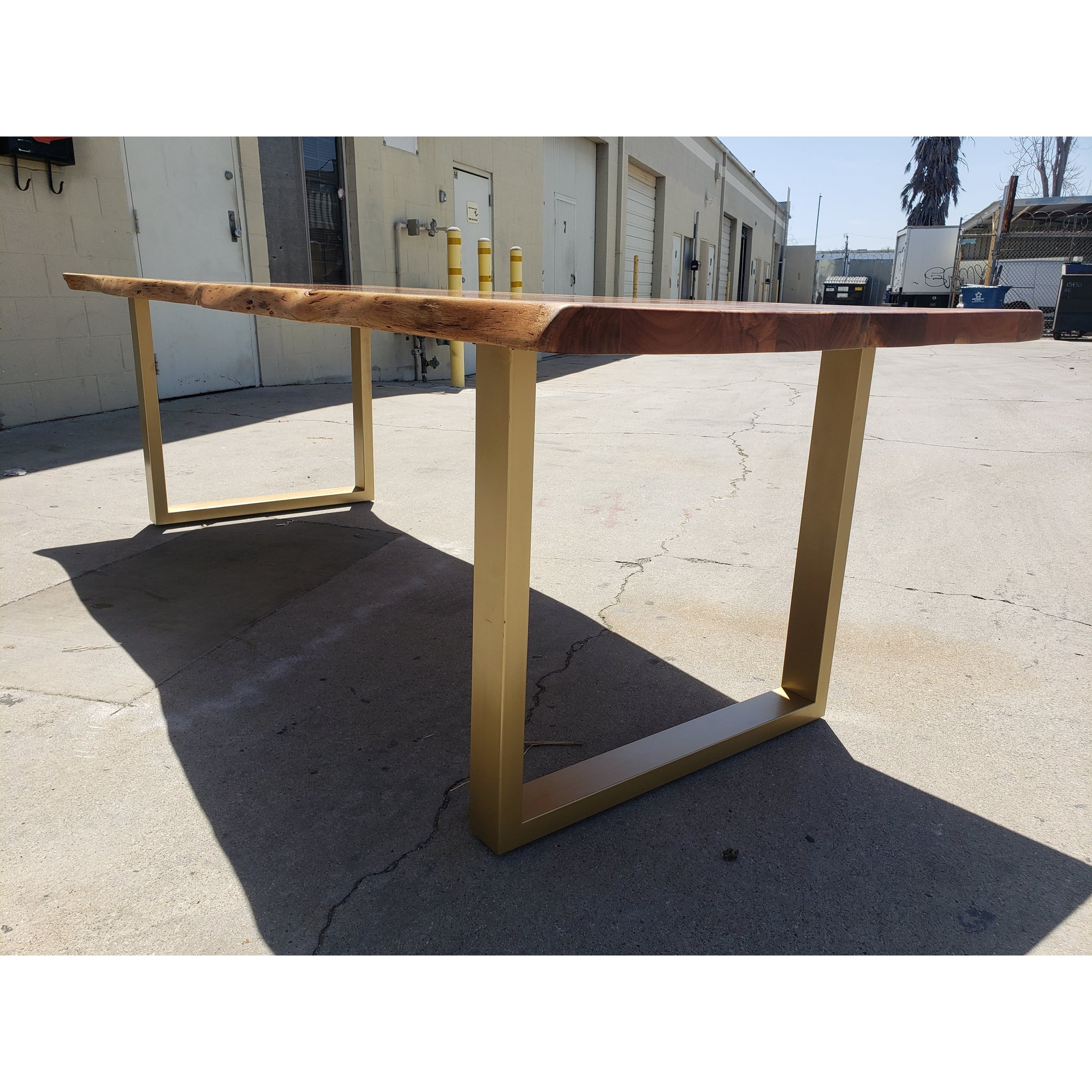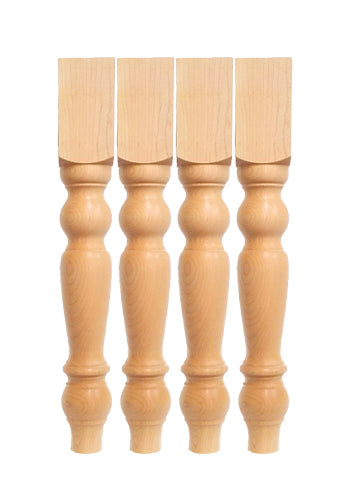Customize Your Table with Distinct Dining Table Legs Wood Creations
Exploring the Various Sorts Of Table Legs Timber for Your Dining Space
The selection of dining table legs wood can greatly affect both the aesthetic and useful high qualities of your dining area. Solid timber options, such as oak and walnut, supply a traditional look with unrivaled longevity, while crafted timber options provide ingenious layouts that imitate the splendor of natural grains. In addition, the growing pattern of redeemed wood introduces a sustainable component that appeals to ecologically aware consumers. As we discover these various choices, it comes to be vital to consider not just the aesthetic appeal however additionally the useful ramifications of each product choice. What elements should lead your decision?
Strong Timber Options

Additionally, strong timber is renowned for its strength and longevity. Unlike engineered materials, strong wood is less susceptible to warping and damages with time when effectively maintained. This makes it an excellent option for households or those who often organize gatherings. Each piece of solid wood is special, showcasing specific features that include in the charm and character of the table.
Additionally, solid wood can be ended up in numerous ways, varying from all-natural oils to tarnished surfaces, enabling home owners to customize their furnishings to match their design. In summary, picking strong wood for dining table legs not just makes certain architectural stability but also boosts the aesthetic charm of the dining location, making it a beneficial investment for any kind of home.
Engineered Timber Alternatives

Plywood, built from several layers of timber veneer, is steady and particularly solid, making it an exceptional choice for eating table legs. Its layered composition enables it to stand up to modifications in moisture and temperature much better than conventional strong wood. MDF, on the other hand, uses a smooth surface for paint or veneering, making it possible for developers to achieve a sleek appearance while preserving architectural integrity.
Particleboard, frequently used in economical options, offers decent stamina and is light-weight, making it much easier to handle. It might not be as durable as plywood or MDF. When picking crafted wood choices, it is necessary to think about the intended usage and desired aesthetic. These materials not only boost the performance of eating rooms but likewise permit better design flexibility, making certain that contemporary and conventional designs can exist side-by-side harmoniously.
Reclaimed Wood Includes
Redeemed wood offers a distinct blend of sustainability and character, making it an increasingly preferred option for eating table legs. Sourced from old barns, factories, and various other structures, reclaimed timber symbolizes a history that new products just can not duplicate. Each piece carries its very own story, marked by distinctive blemishes, knots, and varying grain patterns, which contribute to a table's unique visual charm.
In addition to its aesthetic appeal, reclaimed timber is an eco-friendly option. By repurposing formerly utilized materials, it lowers the need for new lumber, hence assisting to conserve woodlands and reduce waste. This aligns with an expanding consumer choice for sustainable techniques in home furnishings.
Moreover, recovered timber is usually much more durable than freshly harvested timber because of its age. The check it out all-natural drying out process that reclaimed timber goes through lead to a denser and more powerful material, making it less at risk to warping and splitting. This boosts the durability of eating tables, allowing them to hold up against the rigors of day-to-day use.
Softwood vs. Hardwood
When picking table legs, recognizing the differences in between softwood and wood is important for attaining both aesthetic and practical objectives. Softwoods, originated from coniferous trees, such as yearn and cedar, are defined by their lighter weight and convenience of manipulation. They commonly exhibit a more rustic appearance, making them ideal for country-style or casual dining areas. However, softwoods are generally less long lasting than woods, which can be a consideration for households or those looking for durability in their furnishings.
On the various other hand, hardwoods, sourced from deciduous trees like oak, maple, and cherry, are renowned for their thickness, strength, and longevity. The elaborate grain patterns and rich shades of hardwoods provide a ageless and advanced allure, making them ideal for formal dining settings. While hardwoods tend to be extra costly and heavier, their resilience against deterioration often warrants the investment.
Eventually, the choice in between softwood and hardwood for eating table legs need to straighten with your style vision, use requirements, and budget, making sure that your eating space mirrors your individual design while continuing to be useful over time.

Therapies and surfaces
The visual charm and longevity of table legs can be dramatically boosted with numerous surfaces and therapies. These processes not only protect the timber from damages yet likewise raise its appearance, permitting it to match varied interior designs.
One common treatment is tarnishing, which penetrates the timber and enhances its natural grain while adding color. Discolorations provide a rich, sophisticated appearance, enabling house owners to match their furniture with existing design. On the other hand, clear surfaces such as polyurethane or varnish create a protective layer without altering the timber's initial tone, guaranteeing sturdiness versus deterioration.
In addition, all-natural oils, like tung or linseed oil, nurture the timber and offer a refined shine, all while being eco-friendly. These oils permit the surface area to breathe, protecting against moisture build-up and possible bending.
For those seeking a rustic charm, troubled or weather-beaten finishes can be applied to produce an aged appearance, adding personality to the item. Eventually, the selection of finishes and treatments relies on personal choice, preferred looks, and the particular wood kind, making it essential to think about these variables when selecting dining table legs for your room.
Final Thought
Solid woods, crafted alternatives, and reclaimed options each deal distinctive benefits, providing to numerous choices and requirements. Inevitably, the selection of timber kind must line up i was reading this with wanted design, resilience, and environmental considerations, enhancing the general dining experience.
The selection of eating table legs timber can exceptionally affect both the practical and aesthetic high qualities of your eating area - Dining Table Legs Wood. go now Strong timber options, such as oak and walnut, offer a traditional appearance with unequaled resilience, while engineered wood choices offer innovative styles that simulate the splendor of all-natural grains. Solid timber supplies a timeless high quality that can raise the overall layout of a dining room. Each item of solid timber is special, showcasing individual characteristics that include to the charm and personality of the eating table
In addition, recovered wood is often extra long lasting than newly collected wood due to its age.